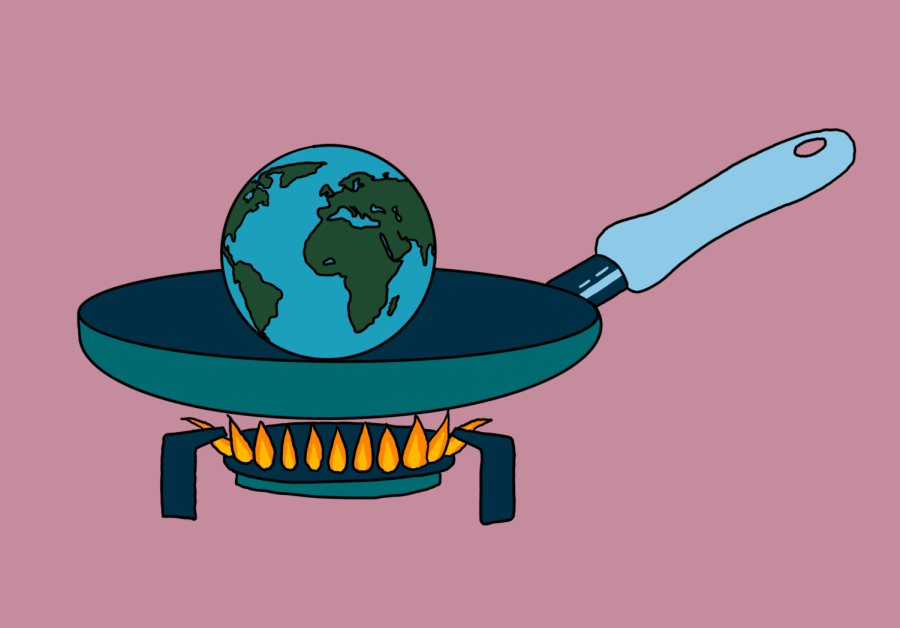“Now we’re cooking with gas.”
It’s an ubiquitous expression. According to the Cambridge Dictionary, to “be cooking with gas” means “to be making very good progress or doing something very well.”
And it’s true there are many advantages to cooking with a gas stove. According to former journalist and current cooking YouTuber Adam Ragusea, a big advantage of gas stoves is their responsiveness. “You ignite them, and they’re instantly hot. You throttle them down, they instantly cool off,” Ragusea said in a 2021 YouTube video.
But, gas isn’t the only responsive cooking method. An increasingly popular option, according to Ragusea, is induction stoves, which use magnetism to cook food. Induction stoves only work with certain cookware. According to Consumer Reports, induction “cooks more quickly when you turn up the heat and responds faster when you dial it back down.” However, it lacks the “visual feedback” of a gas flame.
If you’ve come to this column for cooking advice, you’ve come to the wrong place. While the cooking experience is very important to anyone shopping for a stove, I’m here to discuss the environmental, health and policy implications of gas stoves and other cooking technologies.
“It’s a literal fire, right here in your home,” Ragusea said. “So it’s romantic in that way. The original cooking, over an open fire, right here in your home.”
But, burning a fire in your home has a lot of downsides.
“Burning a gas stove creates indoor air pollution that’s mostly invisible,” said Josiah Kephart, an environmental epidemiologist at Drexel University. “This is mostly nitrogen dioxide and carbon monoxide.”
The air pollution from gas stoves can have a wide range of impacts on your health, Kephart said.
“Most of what we know is around respiratory diseases,” Kephart said. “You breathe these indoor air pollutants and they create this inflammation within your lungs. Now, that inflammation can both have an immediate impact, so your lungs immediately become inflamed. And this is really problematic for somebody who has asthma, somebody who has COPD.”
There are longer-term health impacts as well.
“Being exposed on a daily basis to these indoor air pollutants from gas stoves can actually have these chronic impacts on your lungs and on your health,” Kephart said. “That constant inflammation that you’re being exposed to will actually increase your chance of developing respiratory diseases down the road.”
While this pollution takes place indoors, the U.S. has strict pollution standards for outdoor air pollution, said Vishnu Laalitha Surapaneni, a professor at the University of Minnesota Medical School.
For instance, Surapaneni said, one study found, especially in homes that are less than 1,000 square feet and have poor ventilation, “the nitrogen oxide levels exceed EPA standards 100% of the time if you’re cooking unventilated.”
These harms are not evenly distributed.
“Folks in older homes with lower economic status tend to have higher use of gas stoves,” Kephart said. “There are a bunch of studies of poor children in Baltimore that have shown that children with a similar racial and ethnic background and similar socioeconomic background have higher respiratory diseases if they have a gas stove.”
Outdoor air pollution data show communities of color and low income communities are often more exposed to air pollution as an impact of structural racism because they often live near highways and facilities with lots of pollution, Surapaneni said.
“This is like a double whammy impact,” Surapaneni said. “Also, I think the risks are disproportionate where you have restaurant workers who are on the front lines who are inhaling more of this gas and all of these pollutants.”
Gas stoves also have an effect on the climate.
“Natural gas, which is the most common gas fuel in the United States, is a fossil fuel,” Kephart said. “So, burning that produces carbon, produces methane, carbon dioxide, which are major contributors to greenhouse gasses and to global warming.”
In fact, a study from January indicates gas stoves leak methane even when they’re turned off.
“More than three quarters of the methane emissions were actually measured during the off state,” said Surapaneni. “They estimated, in a 20-year time frame, emissions from all of the gas stoves in the U.S., which is around 42 million homes … they could have a climate impact that’s comparable to 500,000 cars.”
But, stoves aren’t the only way people use natural gas in their homes.
“As far as the amount of gas that’s used for cooking, it’s way lower than what’s used for heating water or heating ventilation systems,” said Peter Raynor, a public health professor at the University. “The environmental benefits of switching from a gas stove to an electrical stove are pretty minimal in the scheme of things, probably.”
Plus, he pointed out at least some of your electricity might be produced using natural gas.
“It’s kind of hard to comment on should we do this gas stove, versus the heating, which should we pick,” Surapaneni said. “I would say that overall, we need to be focused on electrification because both contribute to climate and health impacts.”
If we want to fight climate change and improve people’s respiratory health, gas stoves have got to go.















Nihilian
Dec 10, 2022 at 4:14 pm
It’s amazing how easily they can cure de quervain’s
JF.2632M.UShB10041fd